The OSA election for the 2020 Vice President and two new Directors at Large opened on 19 June 2019. Please read the candidates’ statements and cast your ballot. Instructions for electronic voting or a paper ballot were sent to all eligible voters. If you did not receive voting materials, email voting@osa.org or call +1.202.416.1913.
Polls will remain open until 16 August 2019. Results will be announced at OSA’s Annual Business Meeting on Tuesday, 17 September 2019, in Washington, D.C., USA. They will also be available on OSA’s website in late September. For biographical information about the candidates, visit www.osa.org/election.
Candidates for Vice President
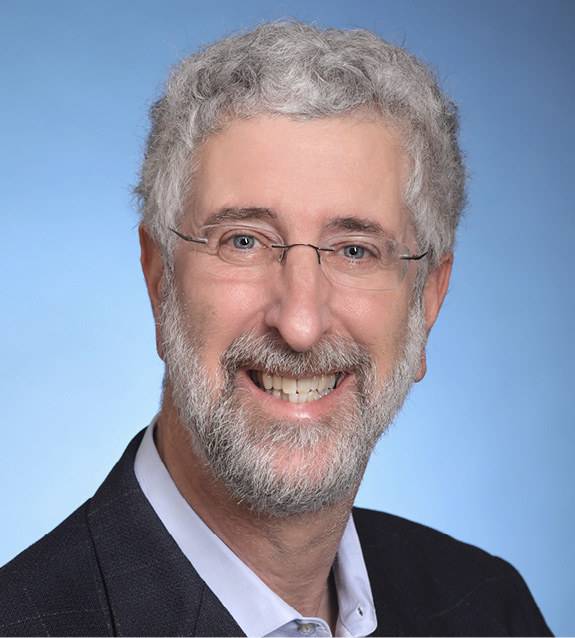
James Kafka
Spectra-Physics/MKS Instruments, Inc., USA
The Optical Society has been my professional home since I first joined as an undergraduate studying optics at the University of Rochester in 1976. My time there and my participation with OSA have taught me the importance of communicating with others—both sharing the work that I am passionate about and, more important, having people around me to supply guidance and inspiration to stimulate my growth.
I have been working in industry for 35 years and am now a Fellow of MKS and the chief technology officer for our lasers business. This is a position where I get to mix both business and science. Throughout my industrial career I have cherished and carefully maintained my contacts with academia. It has been through my participation with OSA that I have been able to straddle those two worlds. My industrial colleagues are constantly inquiring about publications and conferences, while my academic colleagues inquire about the viewpoint of industry. I relish my position as a liaison between the two groups and promise to use this unique position to add value to the leadership of OSA.
I had the privilege to serve on the OSA Board for three years and was a member of the Finance and Public Policy Committees. This was a valuable training experience, where I learned about OSA’s finances and the importance of communicating the relevance and impact of our work to funding agencies and the general public. I have also been fortunate enough to be a Distinguished Traveling Lecturer for the APS Division of Laser Science for the past 20 years. In that role, I have visited numerous smaller educational institutions and observed firsthand how enthusiasm for optics is spread.
Optics is an enabling technology with impact in every modern discipline. Our responsibility in growing this web is to maximize opportunity for collaboration among our communities, including industry, academia and nonprofit organizations throughout the world. We need to continue our success in the areas where OSA has always excelled: educating and exciting students about optics and honoring the achievements of our members. I am pleased to have served on conference and award committees, where I have always sought to honor the deserving but underappreciated candidates.
The OSA core values are innovation, integrity, impact and inclusivity. Building on my experience in industry, I will communicate the enabling role that optics and photonics play in modern society. I am committed to engaging our underrepresented communities and encouraging wider participation in society activities and leadership positions. It would be an honor to apply my unique background and experience to further the vision of OSA.
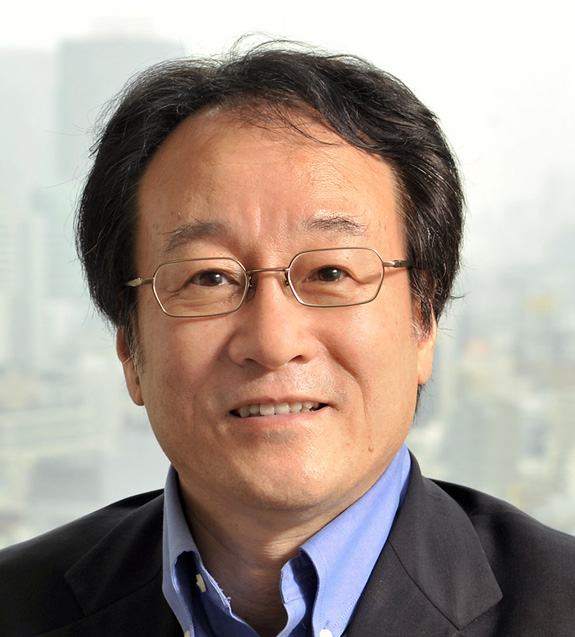
Satoshi Kawata
Osaka University, Japan
I am honored to stand as a candidate for OSA Vice President. I joined OSA as a regular member in 1980, when I was a postdoctoral fellow at the University of California, Irvine, USA. OSA has always been my home society, and I have been reading OSA journals since I was a student. I reported my research and learned of other researchers’ activities in OSA journals and at OSA meetings.
One of my first papers was published in JOSA in 1980; another, published in Optics Letters in 1997, was cited more than 1,100 times. Later, I served as a member of OSA’s International Council beginning in 2008, and as the chair of that council as well as a member of the Executive Committee and a Director from 2009 to 2010. It was a wonderful experience for me to learn about OSA’s service operation, organization structure, policy, missions and future plans.
My general research interests include nanophotonics, microscopy, spectroscopy and inverse problems. In particular, I have been involved in near-field optics, plasmonics, nano-imaging, nanofabrication, Raman spectroscopy/microscopy, and their applications to nanomaterials, biomedical science, optoelectronics and environmental science.
If I am elected, I will join in meeting OSA’s ongoing challenges. My priorities would be:
Fostering students and young scientists. Networking activities by students and young scientists are of particularly great importance, as these are the future leaders of optics, photonics and OSA. OSA events are where they find their peers in optics and photonics, and well as their inspiration. I would like OSA to further support student-proposed events, programs and other activities.
Global services. OSA is the only optical society that contributes globally. This can be further elevated by listening to requests and preferences from local people in different world regions. I would like to propose, for example, creating satellite offices far from the United States, or in areas where the primary language is not English, to make local OSA members and potential future members feel that OSA is close to them.
Increasing the importance of meetings. The recent, rapid progress of the internet and smartphones has changed the way people communicate and interact—and AI technology is expected to take over some basic research tasks. But I believe that new theories, new concepts and new technologies will still be born in the brains of individual humans. Face-to-face physical meetings with colleagues will thus continue to play an important role in discoveries and inventions. I would like OSA to promote both general and topical meetings as well as regional and local meetings.
Expansion of OSA scope. Optics and photonics are becoming more and more important not only in physics, astronomy and engineering, but also in other disciplines and industries such as bioscience and medicine, chemistry and materials science. Environmental monitoring and protection are now global issues, and optics and photonics will play a key role in global environmental issues—for example, in optical monitoring and protection of atmospheric and oceanic pollution.
Candidates for Director at Large
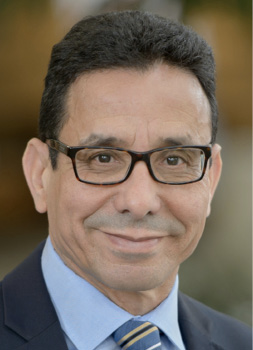
Lahsen Assoufid
Argonne National Laboratory, USA
Nearly 20 years ago, as a junior scientist, I made one of my wiser professional choices and joined The Optical Society. At the time I was already an active member and volunteer for the local OSA and SPIE chapters under the umbrella of the Chicago Optical Society, where I had the opportunity to meet veterans and entrepreneurs in the local optics industry as well as many OSA lecturers, including a few past presidents.
My very first OSA annual meeting, where I represented the Chicago local chapter, opened my eyes to new opportunities for expanding my knowledge and professional network. Through OSA, and as a scientist in X-ray optics and related metrology, I gained valuable insight into the broader field of optics. I soon began devoting my energy and enthusiasm to volunteering for OSA. As a result, I have had the highly enriching experience of serving on various committees and chairing several OSA international optics meetings and workshops.
I am especially proud that I have been able to encourage greater emphasis within OSA on X-ray and extreme-ultraviolet (EUV) optics and light sources of the future. I was fortunate to be involved in the creation and organization of OSA international meetings meant to spur communications among those working to shape the future of compact and brighter X-ray and EUV light sources. Compact X-ray light sources suitable for industrial and academic labs could one day bridge the gap between X-ray tubes and today’s large synchrotrons and free-electron lasers at national laboratories. The proliferation of such compact technology within the broader academic and industrial communities could have an enormous scientific, medical and economic impact and open new applications in optics.
For the last 26 years, I have been a research scientist at the Advanced Photon Source at Argonne National Laboratory and have become a leader in X-ray optics. Large national institutions like Argonne have been in the vanguard of the United States’ global innovation leadership, have used their world-class capabilities to address major scientific and technical challenges in collaboration with the private sector and academia, and have become a critical training ground for the next generation of researchers and engineers. Advanced optics and light sources play a major role in these activities. I hope to bring my extensive expertise in this field to bear in keeping OSA at the forefront of optics.
Optics is becoming more sophisticated and multidisciplinary, with rapid expansion into new areas including medicine, the automotive industry, telecommunications, quantum computing, X-ray science and other technologies. So it is more important than ever to train a new generation of optics engineers and scientists and to connect communities within academia, industry and national research laboratories and institutions, to foster collaboration and promote collaborative innovation. OSA, with its outstanding network of publications and conferences and its robust mentoring and educational outreach programs, is well situated to contribute to these goals. I would be honored to support OSA in these endeavors as a Director at Large.
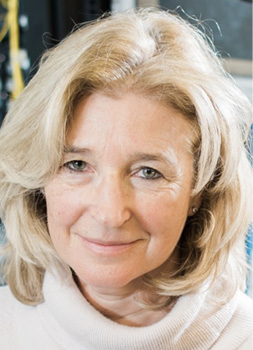
Polina Bayvel
University College London, U.K.
I feel deeply privileged to be able to contribute to the work of OSA and to be considered for the position as a Director at Large. The Optical Society is a natural, lifelong professional home for anyone working in optics, photonics and the science of light. This community is wide-ranging and international, and spans a huge scope of applications through both industrial and academic centers. Optics underpins our society in so very many ways, including the digital information infrastructure, sensing, medicine and manufacturing. Optics professionals—whether in industry or academia, large companies or small, working in medical physics or as teachers—need to know that they belong and that they and their work are recognized and appreciated.
To be successful, OSA needs to maintain its international leadership in a wide range of scientific and technical areas, as well as through its role in defining science policy in the area of optics and photonics. We must continue to play a leading and defining role internationally in our advocacy for optics.
My vision for The Optical Society is to consolidate and enhance its position of leadership, so that we can jointly build on our strengths for the future. The success of this vision depends, first and foremost, on the ability to attract new members, the future leaders in the fields of optics. This requires early engagement of members while they are students, so that they share their professional path with OSA, and the society in turn can support them on their journey through lifelong membership.
I am passionately committed to career development of early-career scientists and engineers, and I believe that we can do more for them within OSA at different career stages. I would like to explore new activities to facilitate this. Specifically I would like to set up a graduate fellowship award program, for Ph.D. students in optics, paying attention to diversity of the student body. This would help engage students at an earlier career stage and would benefit their careers in the long term. I would like to work closely with editorial boards of OSA journals and the technical program committees of OSA conferences, as well as industrial partners and potential sponsors, to expand the range of awards for outstanding, student-authored papers, aiding recognition, engagement and career development.
I am grateful for numerous senior colleagues who have provided both inspiration and mentoring to me in the course of my career. A one-on-one mentoring program between OSA student and early-career members and experienced OSA Fellows would enable tailored mentoring to help with individual career needs. I would like to facilitate the creation of such a program within OSA. I would see this program having enormous two-way benefit to both aspiring early-career researchers and their mentors in developing ideas and providing inspiration.
It would be a privilege to be elected to serve the membership of OSA. We should always remember that this membership is diverse and international, working across many sectors. I would like to ensure it continues to grow from strength to strength—and that OSA is widely recognised as the Optical Society for All!
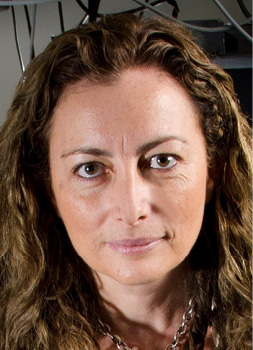
Adela Ben-Yakar
University of Texas at Austin, USA
Twenty-four years ago, I was introduced to the extraordinary power of optics and lasers as a young graduate student. Since then, light’s ability to non-intrusively measure and manipulate properties of matter has captured my imagination. Throughout my academic career, I have relentlessly pushed the boundaries in this area by developing new laser-based methods for precise, high-speed imaging and manipulation of materials and biological samples. OSA has provided me a nurturing home to present my work, meet new colleagues, initiate new collaborations and develop new ideas through valuable discussions.
As optics and photonics enter new fields of applications ranging from energy to medicine, they are transforming our lives for the better and shaping our future. This interdisciplinary and powerful aspect of optics calls for expanding our community through outreach to a broader audience. I believe that this begins with reaching out to students and researchers in academic institutes and photonics-based industries, as well as policy makers. Comprehensive support of academicians, industry leaders and politicians is crucial in expanding our societal impact.
We need to continue developing programs that will attract and welcome new members from diverse backgrounds, fueling the next generation of leaders in optics and photonics and closing the gap between core fundamentals and their rapid translation to industry. Bridging that gap will also help to fulfill the evolving photonics workforce and strengthen a growing photonics presence in both academia and industry. Increasing our scientific and economic impact will also lead to increased research investment.
We also need to continue our focus on advocating for sustainable research funding. New public relations and outreach programs will help OSA members advocate for optics in general and for their own research topics in particular. We can further supplement such efforts with well-quantified measures of the economic impact of optics and photonics. Accomplishing this task requires a closer collaboration than ever between the research community and industry members.
As OSA continues its tradition of promoting and encouraging scientific rigor and excellence through digital forums, including publications and online communication, we should continue our strong tradition of bringing scientists together in conferences and topical and interdisciplinary meetings. Even as we educate our next generation of leaders with the fundamentals of optics and photonics, we should also focus on strengthening their hands-on experience and communications skills. Developing educational units for theoretical and experimental optics that can be made available to a broader community and be implemented at the graduate, undergraduate and even high-school levels could greatly contribute to this mission.
As optics and photonics become indispensable in every aspect of our life, we need to continue promoting our societal impact. If elected, I would be honored to represent our society, listen to the community’s needs, and help define new public and political outreach activities to secure growing research funding for our community and recognition of its economic and societal impact.
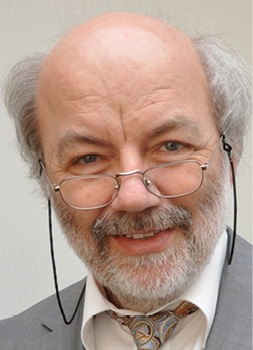
Gerd Leuchs
Max Planck Institute for the Science of Light, Germany
Professional associations try to provide valuable service to their members. This is true for any profession, but it is particularly true in academia—where such associations are called learned societies—because of a very special situation: the producers and the consumers of research results are largely identical. Thus, the quality of the work of one researcher can be best judged by other researchers.
In this sense, the services best provided by a learned society, scientific meetings and scientific publishing, play a key role. OSA is a prime example, and has done excellent service to the community in the past, always striving to adapt to new developments. As the world keeps changing, so does the scientific environment, posing challenges to the community.
Probably the most important performance indicator lies in scientific publications. Their number is increasing at a high rate, doubling roughly every two years, according to some sources. The only way that we can cope with this huge amount of information is the electronic availability of publications, which allows for quick searches. But this also allows for retrieving a scientist’s oeuvre at the click of a button.
The availability of such bibliometric data has changed the way the performance of a scientist is perceived. The number of times papers by a particular scientist are cited, the Hirsch-index and the impact factor of the journal in which the scientist chose to publish are all readily available, and are increasingly used by administrations in career decisions. Young researchers often have the impression, in fact, that their bibliometric data are the prime factors determining their scientific career.
But science is more than these numbers. Researchers should be judged primarily by the science they have done, and all of us sitting in appointment committees should act accordingly. Learned societies such as OSA can help by further developing the publication ecosystem.
Modifications are discussed at different levels. Some journals have already started to publish the reviewers’ comments. Others favor “living” publications that allow for a scientific discussion, which is added online to the article. Modifications such as these may allow for better judgment of papers by someone who is not a specialist in the particular field. Clearly, such modifications must be developed in such a way that they work properly.
I believe that modifying the way we publish will be crucial to keeping scientific research at a level at which it best serves mankind. I am sure that OSA will continue to be a prime player in this, and in other aspects beneficial to the scientific community. We, the members, are OSA. It is up to us to shape the future.
Thanks to the members of the Nominating Council who prepared the 2019 slate.
Eric W. Van Stryland, University of Central Florida, USA, Chair
Pierre H. Chavel, Institut d’Optique, Lab. Charles Fabry, France
Turan Erdogan, Plymouth Grating Laboratory Inc., USA
Alan Willner, University of Southern California, USA
Eric Mazur, Harvard University, USA
Lenore McMackin, InView Technology Corporation, USA
Ian A. Walmsley, Imperial College London, U.K.
Xi-Cheng Zhang, University of Rochester, The Institute of Optics, USA
